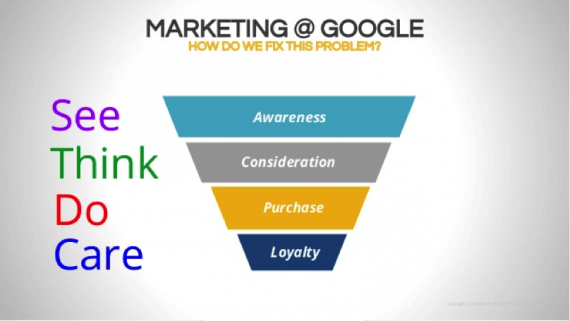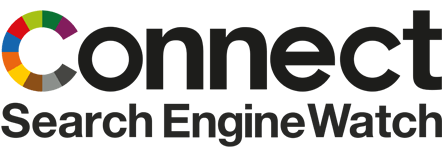
I recently attended the Connect Search Engine Watch Conference in Miami. The conference covered two tracks — “Engage with Organic” and “Innovate with Paid” — over two days. I spent my time on the organic track the first day and the paid track the second.
In this article, I’ll share my observations from the conference.
1. Local search optimization is strongly influenced by Google My Business, as Google Plus sunsets into Photos and Stream. Other key factors in local search optimization are as follows.
- User behavior that indicates positive or negative engagement. A negative behavior is “pogo-sticking,” where users click on a search result, view the page, and quickly return to the search results.
- External local referrals.
- Social interaction — not the number of followers or fans, but how are they engaging.
- Mobile-optimized: Responsive design is not the only answer.
- On-page personalization.
- Hierarchy, page organization, and URL pathways.
- Site index size: how many pages rank vs. how many pages are indexed.
- Page speed — i.e., load times.
2. SEO diagnostics and tracking important. SEO diagnostics need to be investigative, reactive (to negative changes) and proactive. Investigative focuses on technical — on-page and off.
3. Search result cards are a huge opportunity to dominate organic search results, as less and less organic space is available, especially on mobile devices. Search result cards can be knowledge-based, event-based, local-business based, and product-based. For example, the search query “how do i drive on icy roads?” produced a card with eight tips on driving in these conditions, pointing to a page from KSL Broadcasting in Salt Lake City.
4. Develop SEO to help searchers complete a task, to be most relevant in the searcher’s journey. For example, building a knowledge page to answer the question “how to hardwire under cabinet LED lighting” could provide useful information for people thinking about this type of project. But you could also provide promotions and coupons for manufacturers and LED lighting products.
5. All search is local search. One of the most insightful presentations was from BrightEdge, the SEO platform. The speaker stressed that every search is a local search, as competition is now even fiercer with just a “three pack” of organic local results showing — down from seven. However, since the search results shows websites, reviews, and directions, there are much better interactions if you are one of the top three.
6. “Near me.” Develop pages to answer queries that end in “…near me”. Google is increasingly autocompleting queries that could be applicable to local searches with the words “near me”, as in, “movie theaters near me,” or “oil changes near me.”
7. Monitor local citations. Website owners must constantly monitor their local-listing citations for NAP — Name, Address, Phone — consistency. Claim listings from leading directories — such as Yelp, Foursquare, Dex, Superpages, YP — to clean up data, remove duplications, and add content, such as photos and videos.
8. Avinash Kaushik, digital marketing evangelist for Google, was the keynote speaker.
I’m a huge fan of Kauskik. His speaking at this conference was one of my primary reasons for attending. I could write an entire article about his groundbreaking insights intomeasuring social media effectiveness by stressing conversion, amplification, applause rate, and economic value. I’ve addressed it here, too, at “Social Engagement for Ecommerce: How to Build, Measure, Improve.”
To summarize Kaushik’s presentation, demographic and psychographic data is much less relevant in the face of digital data, which reveals intent. In fact, once we do away with demographic modeling and marketing funnels, we can approach consumer engagement in an entirely different way.
Kaushik’s new model for determining consumers’ intent is See – Think – Do – Care.

Kaushik’s model for determining consumers’ purchase intent is See – Think – Do – Care.
- “See” is the largest addressable, quantifiable audience. This is the awareness portion of your engagement with shoppers, the earliest point in their journey.
- “Think” is weak intent, where the shopper may be considering your option, or competitors’ options, or other ways to complete their journey.
- “Do” is strong intent, and where ecommerce tends to focus (the conversion). Merchants are typically good at optimizing for conversion, but not the early-stage engagement in the “See” and “Think” stages.
- “Care” is the outreach to customers who have bought from you two or more times. This is the greatest opportunity for merchants to build meaningful and relevant relationships with their brand ambassadors.
Kaushik emphasized that each point in the customer journey requires a different kind of outreach. He dispelled the traditional marketing funnel that shoves all potential customers into one pathway and attempts to convert them through the small end of the funnel.
His approach is a different way to look at customer engagement, whereby merchants should develop content to address intent rather than an artificial demographic or persona. Advertising and outreach efforts are then aligned with each segment of this journey. Merchants should then evolve how to measure success, aligning their metrics with intent, as well as the desired business outcome.
9. Cross-device attribution. The speaker from IgnitionOne, a digital marketing suite, stressed cross-device attribution as one of the most important metrics in deciding how to arrange and optimize content. Last touch attribution is now woefully inadequate in the digital landscape of multiple devices, apps, and platforms.
10. Relevance to customers. Another way to rethink the funnel is in terms of your company’s relevance to your customer: You are successful if you get your content shared with your audience’s audience. I have addressed social sharing platforms, by the way.
11. Engage for the moment. The last speaker of the conference, from Fospha, a profiling and optimization platform, appropriately closed with comments about optimizing customer value by understanding engagement at that moment. Sophisticated digital platforms are now incorporating content engagement, real-time intent prediction, and “journey stitching” to create that moment.
These modeling platforms emphasize key engagement points:
- Looking at behavior from the perspective of one silo makes sense until you look at the entire customer journey, which can change predictive behavior dramatically;
- Model after the customer mindset;
- Model across the entire customer journey;
- Deliver real-time triggers for real-time intent prediction;
- Start simple with your predictive modeling.
The recurring theme of modeling content and measuring for consumers’ engagement across their entire purchase journey was, for me, the biggest take-away from this worthwhile conference.
[“source-Practicalecommerce”]




